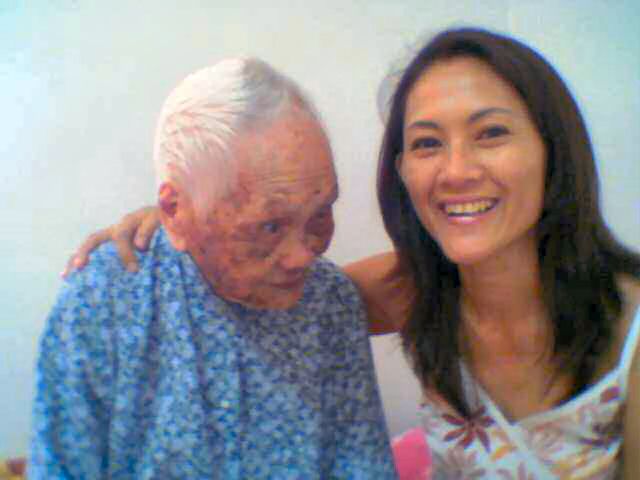Gong Xi Fa Cai --- and fried fish Haka style


Happy new year to all of you. Shall the Year of the Monkey be the end to all monkey business to all of us!
The picture above shows my wife and her grandmother. The lady is 106 years old and has a good sense of humour. She actually contributed to one of the stories I use when teaching about software analysis and change management.
Since I'm very curious about cultures, the fact that I'm living in an intercultural relationship gives me ample leeway to explore similarities and differences. One day my wife was preparing fried fish Haka (the Chinese tribe she belongs too, the same like the founding father of modern Singapore) style.
I watched her preparation carefully: She took the whole nice fish, cleaned it, added spices and herbs and then took the really big knife and chopped of head and tail. I though by myself "Hmm -- wouldn't it be nicer if the fish would be complete. Maybe she wants to make fish head curry?" So I asked her: "Oh best of my wifes, why do you cut off head and tail from the fish?"
The answer was prompt: "This is how my mother teached me to do fried fish Haka style!".
So the next time we visited my mother-in-law (which is quite a regular exercise in a Chinese family) I asked her (with the help of my wife's translation): "How do you make fried fish Haka style?"
The answer, not surprisingly was: You clean it, add spices, add herbs and then you cut off head and tail. Again I asked, who teached her. She answered, that her mother-in-law shared the recipe with her. Luckily the lady is still around (see picture above), so I could ask her.
When my wife translated the question, the old lady burst into laughing. Her explanation: "When I teached your mother-in-law how to prepare fried fish Haka style our kitchen and our pans were so small, the fish didn't fit in!"
Since that day I use the story and a picture of a fish head in class. Most of my participants are able to find a lot of fish heads in the way they do software. What are yours?
Posted by Stephan H Wissel on 24 January 2004 | Comments (0) | categories: Software